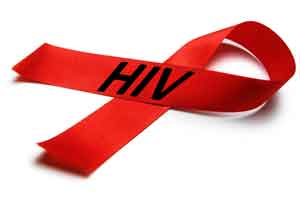- Home
- Editorial
- News
- Practice Guidelines
- Anesthesiology Guidelines
- Cancer Guidelines
- Cardiac Sciences Guidelines
- Critical Care Guidelines
- Dentistry Guidelines
- Dermatology Guidelines
- Diabetes and Endo Guidelines
- Diagnostics Guidelines
- ENT Guidelines
- Featured Practice Guidelines
- Gastroenterology Guidelines
- Geriatrics Guidelines
- Medicine Guidelines
- Nephrology Guidelines
- Neurosciences Guidelines
- Obs and Gynae Guidelines
- Ophthalmology Guidelines
- Orthopaedics Guidelines
- Paediatrics Guidelines
- Psychiatry Guidelines
- Pulmonology Guidelines
- Radiology Guidelines
- Surgery Guidelines
- Urology Guidelines
New HIV guideline outlines strategies for prevention in high-risk people

A new Canadian guideline outlines how new biomedical strategies to prevent HIV infection can best be used in high-risk populations both before and after exposure to the virus. The guideline, published in CMAJ (Canadian Medical Association Journal) applies to adults at risk of HIV infection through sexual activity or injection drug use.
"The large financial cost of HIV infection and the young age of those newly diagnosed (most new cases occur in those aged 30 to 39 years) underscore the economic and social importance of preventing new infections," writes Dr. Darrell Tan, an infectious diseases physician and researcher at St. Michael's Hospital, Toronto, Ontario, with coauthors.
Key strategies, in line with international guidelines, include pre-exposure prophylaxis (PrEP), which refers to the regular use of anti-HIV medications beginning before an exposure occurs, and nonoccupational postexposure prophylaxis (nPEP), which involves taking a course of antiretroviral medications after a sexual or drug use-related exposure to HIV.
The guideline, with easy-reference boxes outlining practical advice for prevention, is aimed at clinicians in primary care, infectious diseases, emergency medicine, nursing, pharmacy and other disciplines. Policy-makers may also find it useful in setting health care policy. The Biomedical HIV Prevention Working Group of the CIHR Canadian HIV Trials Network developed the guideline with a panel of 24 experts from diverse disciplines.
More than half (54%) of all new infections in Canada occur in gay, bisexual and other men who have sex with men, a group with an estimated risk of infection 131 times higher than other men. Injection drug users are estimated to be 59 times more likely than nonusers to acquire HIV. People from countries with endemic HIV are 6.4 times more likely to become infected, and Indigenous people are also at higher risk (2.7 times), compared with the general population in Canada.
The authors note that the medications used as PrEP and nPEP are generally very safe and effective, although these regimens may not be right for all people at increased HIV risk, because of personal preferences or risk of rare drug toxicities.
Health economic analyses indicate that targeting PrEP to high-risk populations is cost-effective in terms of health care spending.
"To date, medication costs have also restricted the feasibility and acceptability of these strategies," write the authors. "However, the recent introduction of generic TDF/FTC [the anti-HIV medication approved for use as PrEP in Canada and a major component of all nPEP regimens] and the increasing availability of public drug coverage for PrEP in Canada may have substantial effects on their uptake."
This Canadian guideline is generally consistent with international guidelines from the United Kingdom, United States, and Australia.
"We hope that this guideline will contribute to reducing HIV incidence in Canada by improving the quality of care, increasing access to care, reducing inappropriate variation in practice and promoting the rigorous evaluation of biomedical prevention strategies nationwide," the authors conclude.
Development of the guideline was funded by the Canadian Institutes of Health Research and supported in-kind by the CIHR Canadian HIV Trials Network.
"Canadian guideline on HIV pre-exposure prophylaxis and nonoccupational postexposure prophylaxis" is published November 27, 2017.

Disclaimer: This site is primarily intended for healthcare professionals. Any content/information on this website does not replace the advice of medical and/or health professionals and should not be construed as medical/diagnostic advice/endorsement or prescription. Use of this site is subject to our terms of use, privacy policy, advertisement policy. © 2020 Minerva Medical Treatment Pvt Ltd